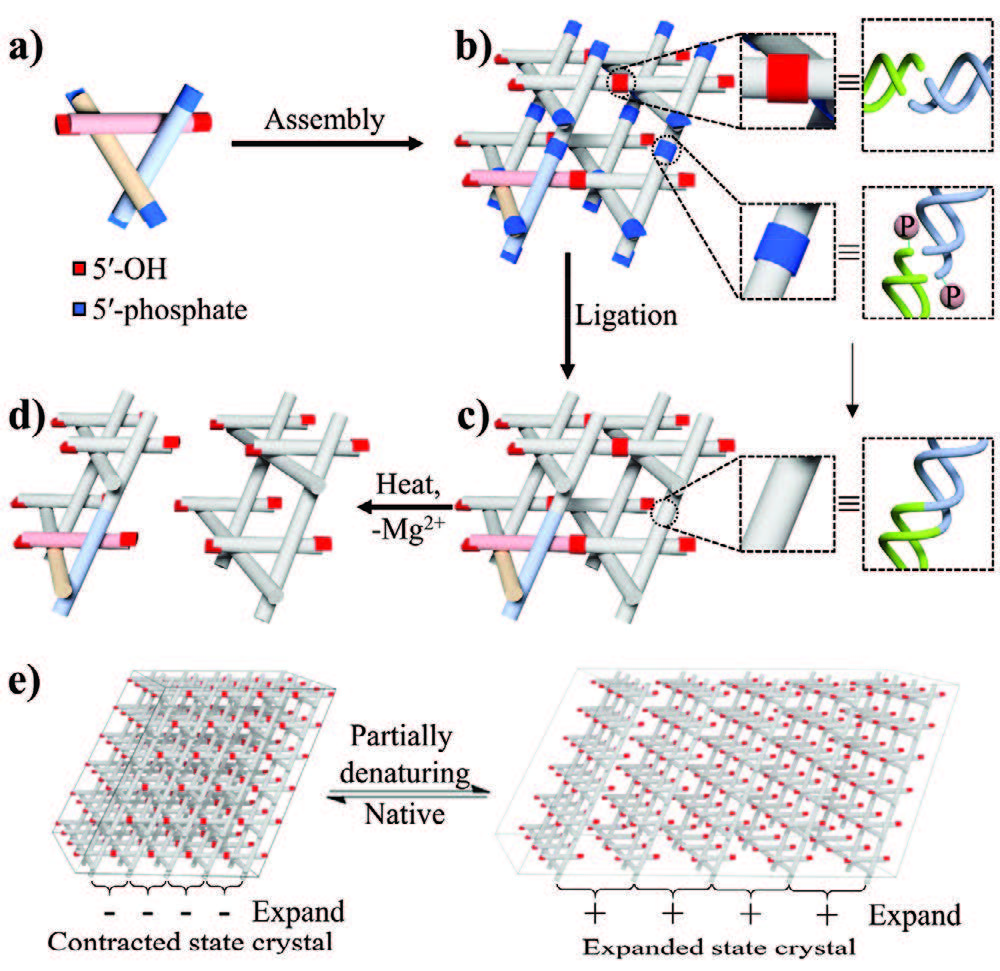| Aug 18, 2022 |
An engineered DNA crystal actuator system
(Nanowerk News) The design of macroscopic material with desired chemical, physical, and mechanical properties from the molecular level up is an ongoing challenge for self-assembly and nanotechnology.
|
|
Due to its unparalleled programmability and biocompatibility, structural DNA nanotechnology has proved to be a potent approach to such designs, where the self-assembled nanostructures are responsive via a variety of mechanisms including DNA strand displacement, conformation change of specific motifs, targeting with DNA aptamers (see for instance: "Cancer-fighting nanorobots programmed to seek and destroy tumors"), and DNAzyme domains.
|
|
Whereas these approaches promise great potential for sensitive biosensing, controllable drug delivery, medical diagnosis, and disease treatment, most reconfigurations of the self-assembled nanostructures are limited to the scale of nanometers.
|
|
Now, in new work reported in Advanced Materials ("Powering ≈50 µm Motion by a Molecular Event in DNA Crystals"), researchers demonstrate an engineered DNA crystal actuator system that can reversibly expand and contract over 50 µm in response to multiple external stimuli.
|
|
During this expansion/contraction process, the porosity (thus the permeability) of the crystal greatly changes, which provides a mechanism to reversibly encapsulate/release nanoparticles or proteins.
|
 |
| Schematic design of stimuli-responsive DNA crystals. a) The DNA tensegrity triangle motif. b) The self-assembled crystal of DNA triangles. The solid pink circles labeled with P represent 5′-phosphates. c) 2D ligated DNA crystals. Note that DNA frameworks are held along horizontal direction by sticky-end cohesion (red). d) DNA crystal expansion responds to external stimuli. e) An overall view of the expansion/contraction of DNA crystals. (Reprinted with permission by Wiley-VCH Verlag)
|
|
The authors of the study envision that their work will lead to several exciting possibilities as smart materials, including: 1) the easily observable size change of DNA crystals could be exploited as a report for chemical detection; and 2) the system can serve as a sponge to store and release nanometer-sized particles and to delivery macromolecular drugs (e.g., small nucleic acids and proteins).
|

 By
Michael
Berger
– Michael is author of three books by the Royal Society of Chemistry:
Nano-Society: Pushing the Boundaries of Technology,
Nanotechnology: The Future is Tiny, and
Nanoengineering: The Skills and Tools Making Technology Invisible
Copyright ©
Nanowerk LLC
By
Michael
Berger
– Michael is author of three books by the Royal Society of Chemistry:
Nano-Society: Pushing the Boundaries of Technology,
Nanotechnology: The Future is Tiny, and
Nanoengineering: The Skills and Tools Making Technology Invisible
Copyright ©
Nanowerk LLC
